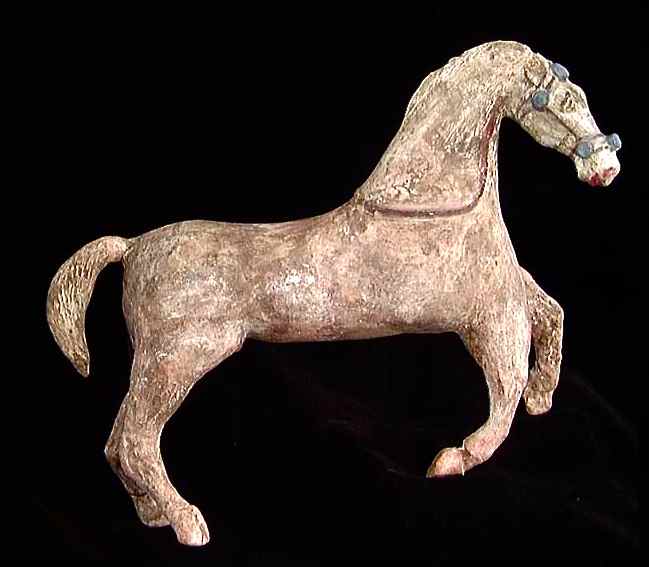

Title: Extremely Rare Ancient Greek Polychrome horse 3th century BC
Shipping: $150.00
Artist: N/A
Period: Antiquity
History: N/A
Origin: N/A
Condition: Museum Quality
Item Date: 3th century BC
Item ID: 5205
EXCEPTIONAL CANOSAN GREEK POLYCHROME HORSE NEARLY IDENTICAL TO THE JACQUELINE KENNEDY ONASSIS EXAMPLES, ca. 3rd century BC. The horse with bridle and most of the the original white, blue, pink and burgundy pigment. 7 x 9.5 inches. Professional repair to legs. Extremely rare. See a couple of nearly identical examples in the Sotheby's Jacqueline Kennedy Onassis sale. This is a featured art consignment piece. All collectibles are curated distinguishable art objects from top end collections. We’ve built an exceptionally sophisticated safe infrastructure with a proven consignment management system featuring high quality visual art and antiques, for both buyers and sellers. All published works of art must be unique & rare in order to receive an invitation to join our exclusive gallery forum. You can reach us if you have any questions. 415-776-0104
Link: http://en.wikipedia.org/wiki/Polychrome
Polychrome is one of the terms used to describe the use of multiple colors in one entity. It has also been defined as "The practice of decorating architectural elements, sculpture, etc., in a variety of colors." Polychromatic light is composed of a number of different wavelengths. Most often, the term is used in conjunction with certain styles of architecture, pottery or sculpture in multiple colours. The word derives from the Greek
Some very early polychrome pottery has been excavated on Minoan Crete such as at the Bronze Age site of Phaistos.[3] In ancient Greece sculptures were painted in strong colours. The paint was frequently limited to parts depicting clothing, hair, and so on, with the skin left in the natural colour of the stone, but it could also cover sculptures in their totality. The painting of Greek sculpture should not merely be seen as an enhancement of their sculpted form, but has the characteristics of a distinct style of art. For example, the pedimental sculptures from the Temple of Aphaia on Aegina have recently been demonstrated to have been painted with bold and elaborate patterns, depicting, amongst other details, patterned clothing. The polychrome of stone statues was paralleled by the use of different materials to distinguish skin, clothing and other details in chryselephantine sculptures, and by the use of different metals to depict lips, nipples, etc, on high-quality art sculptures.